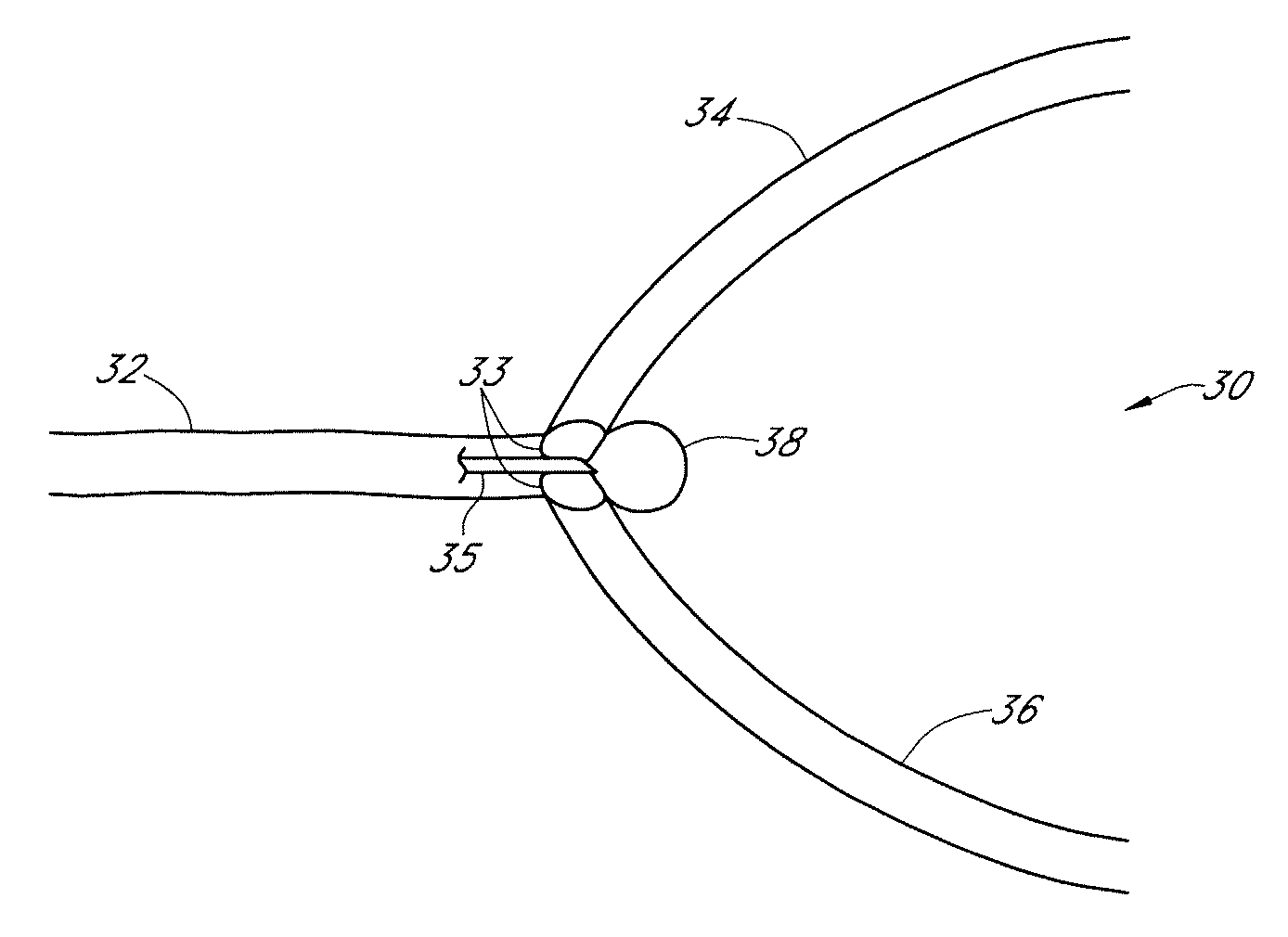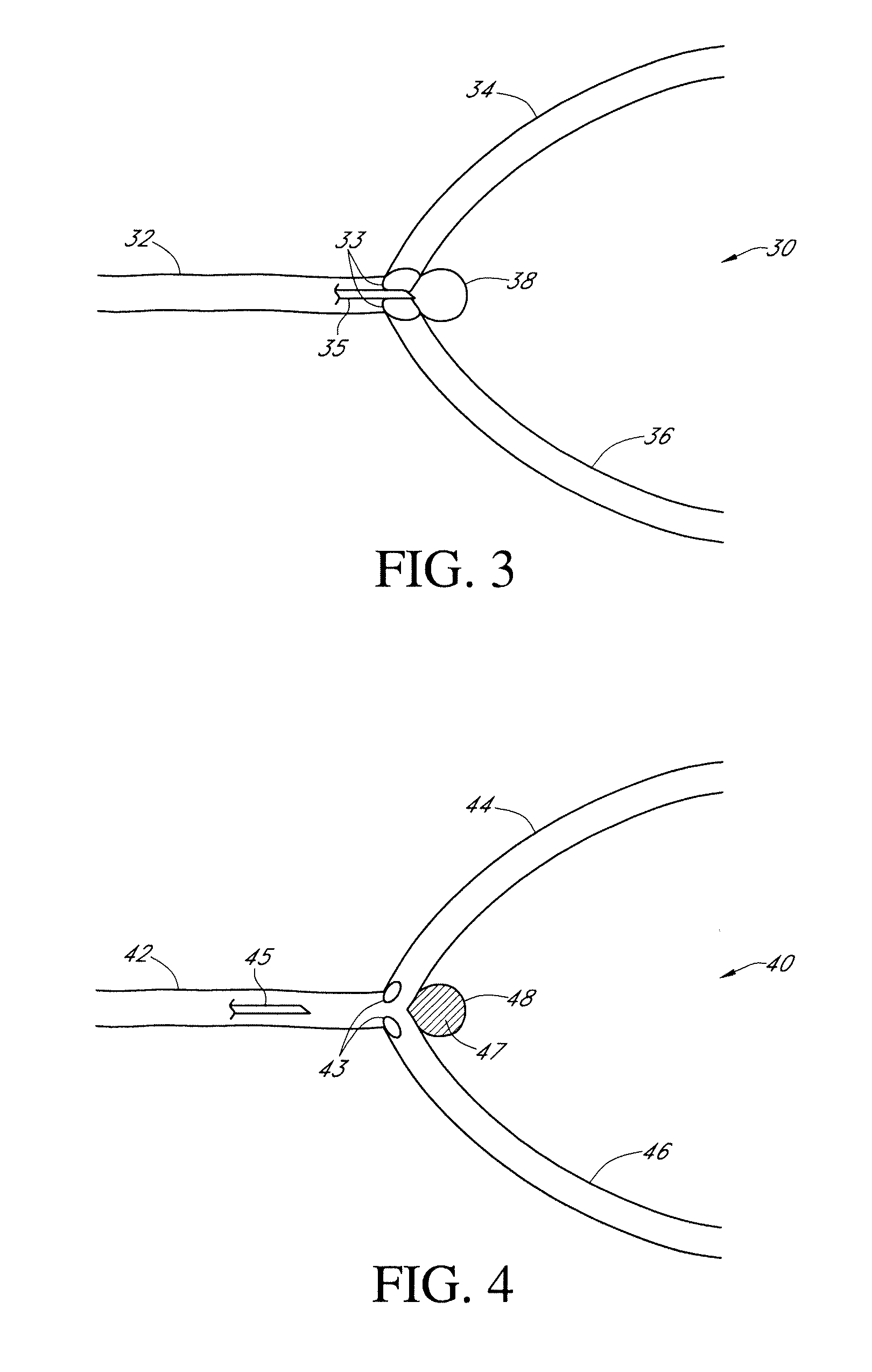Methods of treating a blood vessel
a blood vessel and blood vessel technology, applied in the field of blood vessel treatment, can solve the problems of affecting the treatment effect, affecting the patient's recovery, and affecting the recovery effect, and achieve the effect of reducing the turbulence of blood flow
- Summary
- Abstract
- Description
- Claims
- Application Information
AI Technical Summary
Benefits of technology
Problems solved by technology
Method used
Image
Examples
example 1
Preparation of Stabilized n-Hexyl Cyanoacrylate
[0065]Step (a) Initial Reaction
[0066]Formaldehyde frills (290 g, 9.7 moles) were added to a 3000 mL 3-necked reactor, equipped with a Dean-Stark distillation apparatus, followed by 650 mL methanol and finally 4.8 mL piperidine. The reaction mixture was stirred using an overhead stirrer and heating was initiated. The mixture was heated to between 65° C. and 80° C. and maintained in this range for 45 minutes, during which time the solution became “milky”. The temperature was reduced to ˜55° C. and n-hexyl cyanoacetate (1600 g, 8.8 moles) was slowly added. During the addition of the n-hexyl cyanoacetate, the temperature was maintained between 68° C. and 75° C. The reaction mixture color became yellowish toward the completion of the addition. An additional 100 ml methanol was used to rinse residual n-hexyl cyanoacetate into the reaction mixture via the addition funnel.
[0067]The reaction was heated to reflux and approximately 610 ml methanol...
example 2
Photochemical Viscosity Adjustment of n-hexyl Cyanoacrylate Monomer
[0073]The purified n-hexyl cyanoacrylate monomer from Example 1, containing 4-methoxyphenol, was treated with Aldrich HQ & MEHQ inhibitor remover, Sigma-Aldrich, Inc., St. Louis, Mo., USA (2005-2006 Catalog #306320), to remove the p-methoxyphenol, followed by bubbling argon through the n-hexyl cyanoacrylate monomer to remove SO2. The viscosity of the purified n-hexyl cyanoacrylate, free of 4-methoxyphenol and SO2, was about 4 centipoise.
[0074]The purified n-hexyl cyanoacrylate (500 g) was then introduced into an Ace glass photochemical reactor equipped medium pressure quartz mercury vapor lamp. The n-hexyl cyanoacrylate was irradiated until the liquid had a viscosity of about 20 to about 35 centipoise. The resulting oligomer material is referred to as Component A. This viscosity modification tailors the end product for use in the vasculature of a patient, with sufficiently high viscosity to allow the injected composi...
example 3
Preparation of Plasticizer Component
[0075]A stock solution of tri-n-butyl O-acetylcitrate containing 4-methoxyphenol and 2,6-di-tert-butyl-4-methylphenol was prepared as follows. To tri-n-butyl O-acetylcitrate (500 grams, 1.24 mol) under argon was added 4-methoxyphenol (750 PPM) and 2,6-di-tert-butyl-4-methylphenol (750 PPM). The mixture was stirred until homogeneous. Sulfur dioxide (SO2, 600 PPM) was bubbled through the tri-n-butyl O-acetylcitrate solution containing 4-methoxyphenol and 2,6-di-tert-butyl-4-methylphenol. The resulting material is referred to as Component B.
PUM
| Property | Measurement | Unit |
|---|---|---|
| Time | aaaaa | aaaaa |
| Time | aaaaa | aaaaa |
| Flow rate | aaaaa | aaaaa |
Abstract
Description
Claims
Application Information
 Login to View More
Login to View More - R&D
- Intellectual Property
- Life Sciences
- Materials
- Tech Scout
- Unparalleled Data Quality
- Higher Quality Content
- 60% Fewer Hallucinations
Browse by: Latest US Patents, China's latest patents, Technical Efficacy Thesaurus, Application Domain, Technology Topic, Popular Technical Reports.
© 2025 PatSnap. All rights reserved.Legal|Privacy policy|Modern Slavery Act Transparency Statement|Sitemap|About US| Contact US: help@patsnap.com



